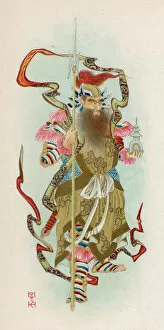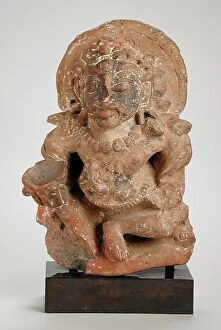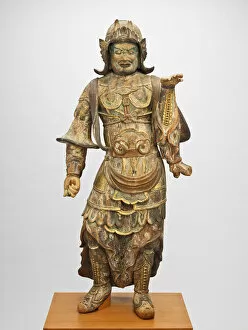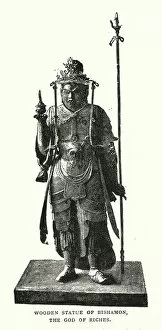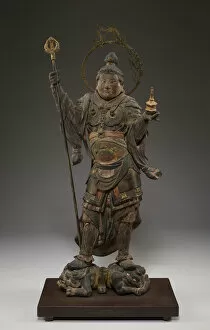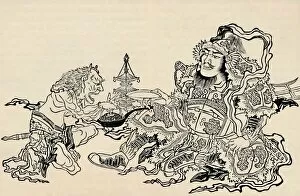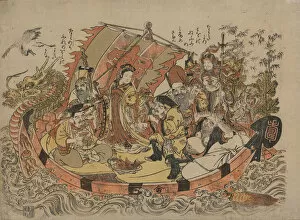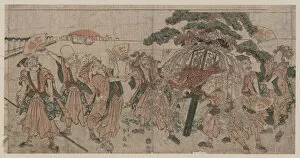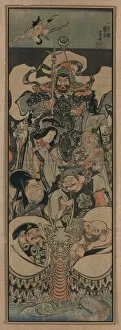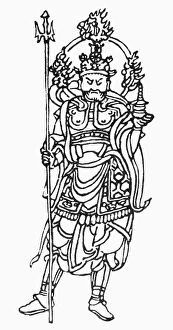Bishamon Collection
Bishamon, the revered 11th century deity, is known as the God of Glory and the protector of wealth in Japanese mythology
For sale as Licensed Images
Choose your image, Select your licence and Download the media
Bishamon, the revered 11th century deity, is known as the God of Glory and the protector of wealth in Japanese mythology. This wooden statue, a testament to the divine power of Bishamon, showcases intricate carvings and vibrant colors. As Bishamon, or Vaisravana, the Guardian of the North, he is depicted with a fierce expression and holds a treasure jar, symbolizing his role as a god of riches. In Japanese art, often depicted with his ministering demon, emphasizing his dual role as a bringer of fortune and a fierce guardian. This line engraving from the 1800s captures the essence of Bishamon's divine presence, showcasing his iconic attributes and the intricacies of Japanese artistry.

